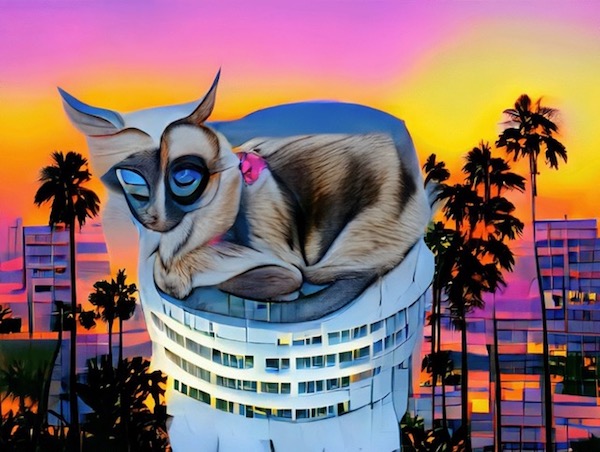As a Millennial who remembers the world before digital devices and the internet were everywhere, Sarah Zucker — aka The Sarah Show — is fascinated by the accelerated transition society at large is going through.
“I feel as a Millennial that I’m part of this generational cohort that’s in this very unusual experience of having had an analog childhood and now living a digital future,” says Zucker.
“I’m specifically using tools of the recent past like analog TVs to take people out of our present moment and create this different experience of time and sense. I would say my work really is about time more than anything.”
The Los Angeles artist is considered an OG of the NFT art scene, having started way back in 2019 (her first mint was on April 4 that year) compared to most artists who arrived on the scene in the last 12–24 months.
Her art seems to resemble something you’ve seen before, all while feeling like something completely new, telling stories with a dose of humor while tapping into cutting-edge and obsolete technologies.
Having been featured at Sotheby’s and more recently at the Los Angeles County Museum of Art (LACMA), Zucker’s love for art started with film photography.
“I’ve always expressed myself visually. As a teenager, I got very into photography and specifically working with film photography. We’re talking about the early 2000s when everything was going digital,” she says.
“Vintage technology has always been of interest to me. It’s not necessarily about nostalgia, it’s more that I find the physicality of vintage technology really interesting.”
She was an early convert to uploading pics on Tumblr and Instagram and spent about a decade pursuing photography before her master’s in screenwriting saw her embrace narrative filmmaking on video.
Influences:
The Sarah Show takes inspiration from German expressionist art, which emerged in a similarly tumultuous period to today around the end of the First World War.
“There had just been this World War that made everyone feel like the world was suddenly getting a little more global than felt comfortable. There was a pandemic. There were all these things in society, and yet the artists of that time were so expansive, emotive and free,” she says.
“They were breaking forms and creating things in a way that said, ‘We don’t care how…
Click Here to Read the Full Original Article at Cointelegraph.com News…
























